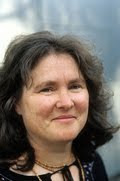There's a corner store ten minutes walk away from my house where I often by bread and milk and a newspaper. The old man who owns the store was a regular visitor to the Solomon Islands in his younger days as he had been a keen SCUBA diver. A friend of his found a biography in a second-hand store in Melbourne all about a married couple called the Bignells who ran a plantation in the Solomons in the early 1900s. He lent the storeman the book who in turn lent it to me. The biography is called Yield Not to the Wind and is written by a daughter of the couple, Margaret Clarence (nee Bignell).
Well, what a read! It is an amazing story of an iron-willed Scottish woman Kathleen who married an Australian adventurer, Charles Bignell. Charles and Kathleen Bignell settled in the Solomons and built a large homestead at Fulakora, at the end of the Santa Ysabel island. This is the island my husband comes from. A small world indeed!
The Bignells traded in copra and shells, having their own cutters which sailed throughout the Solomons. Their children spent their early years frollicking in the lagoons and beaches before being sent to boarding schools in Sydney. Later when their three children had grown-up, their marriage faultered and Kathleen moved to PNG and sussessfully ran a hotel by herself in Rabaul. Soon after the war came and Kathleen was captured by the japanese. She spent a few years as a prisoner of war and returned to Australia a broken woman.
I enjoyed reading this account of an amazing couple who battled through all kinds of hardship and clearly thived on the challenge. Self published in 1982, the Bignells eldest child is the author and her fondness of the Solomon Islands shines through. Some of the language is patronising when refering to "the natives", but I think it's a product of having been written by a woman who grew up as a member of the ruling colonial class of the day.
Some of the book had snippets of Kathleen Bignell's poems which were mainly doggerel, but these were easy enough to skim over. The details of her life in Japan as a prisoner of war were harrowing. The best part about reading this was how my husband could tell me more about the places seen in the photos. There is also a chapter written about the Malaita massacre years from 1926 to 1928 which is gory but interesting.
Now I must return this book to the man who runs the corner store. As the book was self published there was probably a very small print run. I wonder if I'll ever find a copy again.







